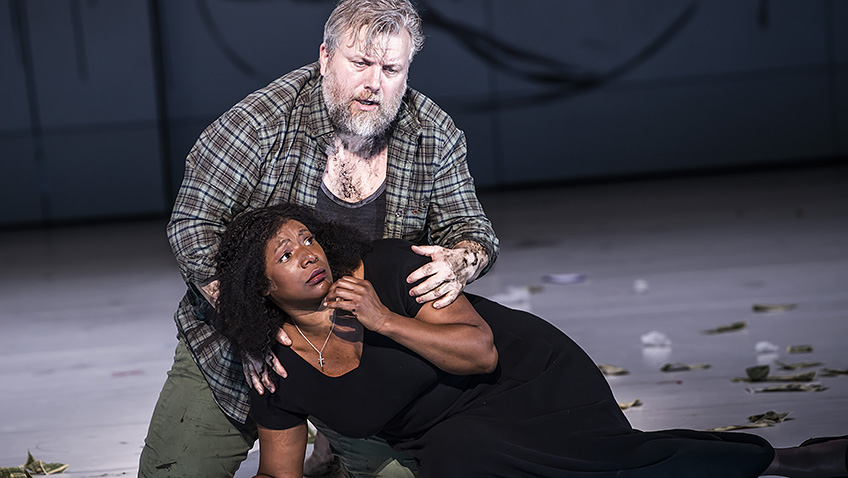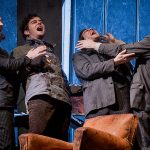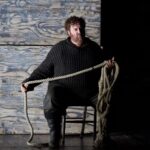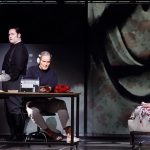Robert Tanitch reviews ENO’s Luisa Miller at London Coliseum
Verdi’s Luisa Miller, which premiered in 1849 in Naples, is based on Schiller’s 1784 play, Kabale und Liebe (Intrigue and Love). Salvadore Commarano’s libretto edited Schiller’s text to appease the censors.
The opera was a major transitional point in the 34-year-old Verdi’s career. He moved away from the epic to the more intimate and domestic. Rigoletto, Il Travatore and La Traviata would follow next.
Luisa Miller is not performed that often. I haven’t seen it since 1978. It’s a great pity it couldn’t have had a better production. The setting is no longer 17th century Tyrol. Barbora Horáková’s stark, unappealing update does the story-line and the singers no favours whatsoever.
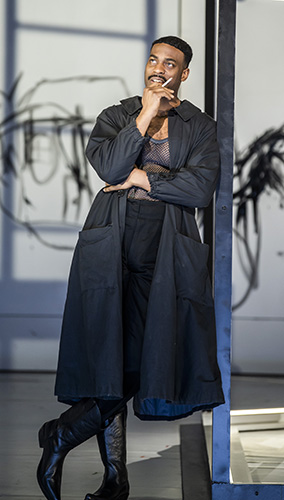
Soloman Howard in Luisa Miller
The set is bare walls on which people draw and make dirty. Centre stage is a skeletal house. An oil drum figures prominently. A naked body is taken out of a plastic bag and fondled. A scarecrow is hung up and peppered with arrows.
The opera, divided into three acts (intrigue, love, poison) opens with a birthday party, a child’s birthday party with lots of balloons and the chorus, dressed as clowns, and behaving in a very strange and childish manner, taking their cue from Mexico’s Day of the Dead.
Many of the cast are in their underwear. The four acrobatic dancers are particularly distracting. “They are part of the darkness,” explains Horáková in the programme. Really?
Luisa, (Elizabeth Llewellyn) an innocent village maiden, is in love with Rodolfo (David Junghoon Kim) , who is pretending to be a commoner when he is in fact the son of a Count (James Creswell), the local feudal lord, who wants him to a marry a widow.
Wurm (Solomon Howard, a striking presence physically and vocally), who works for the Count and is in love with Luisa, tells her father (Olafur Sigurdarson) who Rodolfo really is.
The Count arrests Luisa and her dad. Wurm tells her the way to save her dad’s life would be to write a letter in which she makes it clear she loves Wurm and never loved Rodolfo.
Rodolfo and Luisa are regularly accompanied by two children playing their younger selves.
The score, conducted by Alexander Joel, is always, dramatically and emotionally, vastly superior to the irritating production. High spots include the Act 1 finale and the Act 3 finale. Sigurdarson and Llewellyn have a tender and moving duet. (Father/daughter relationship always was Verdi’s forte). The two basses, Creswell and Howard, also have a great impact when they remember a past murder.
Junghoon Kim (whose singing is more convincing than his acting) has the most famous single number of the score, a lyrical lament of great beauty, which he thrillingly delivers after he has read Luisa’s letter and believes her betrayal to be true.
 Horáková has the dying lovers crawling across the vast Coliseum stage on their stomachs to reach each other for their final duet. It’s absurd, the sort of comic thing you would do if you wanted to send up a Victorian melodrama.
Horáková has the dying lovers crawling across the vast Coliseum stage on their stomachs to reach each other for their final duet. It’s absurd, the sort of comic thing you would do if you wanted to send up a Victorian melodrama.
To learn more about Robert Tanitch and his reviews, click here to go to his website
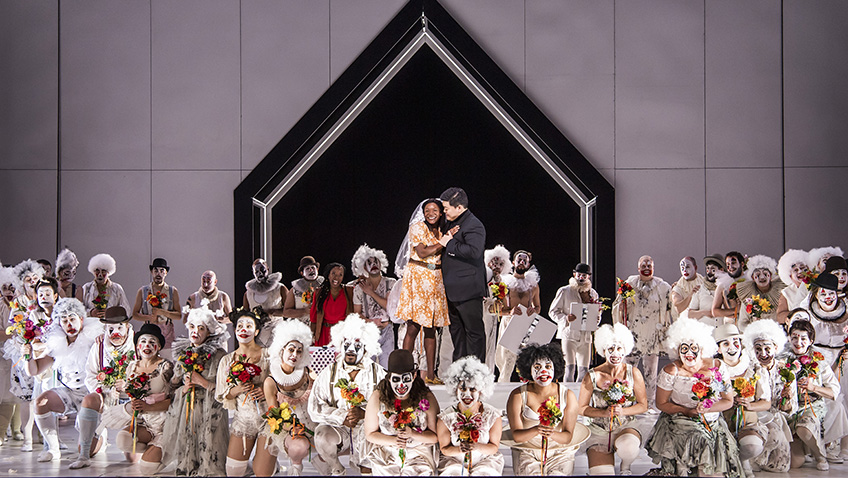
Cast of Luisa Miller

